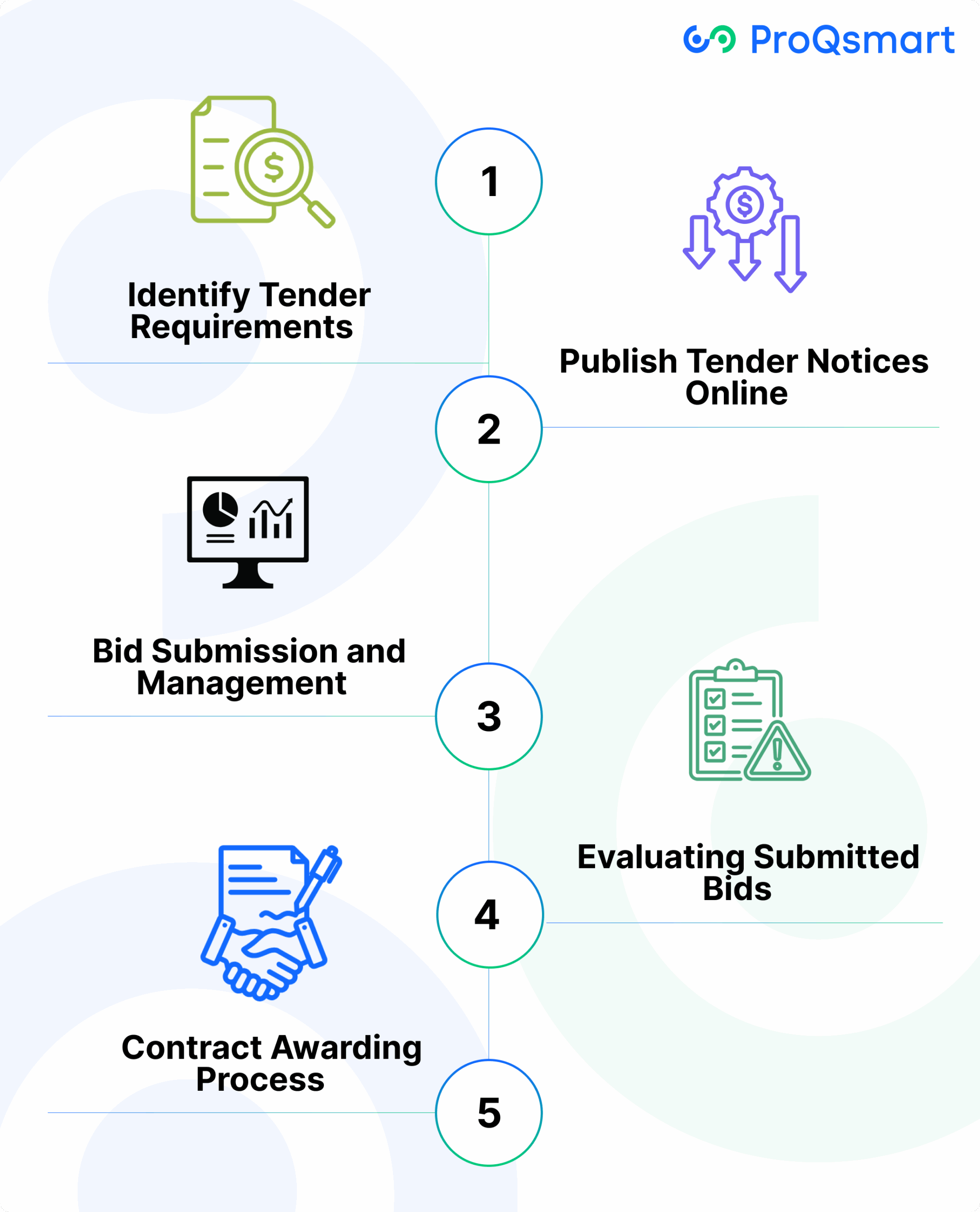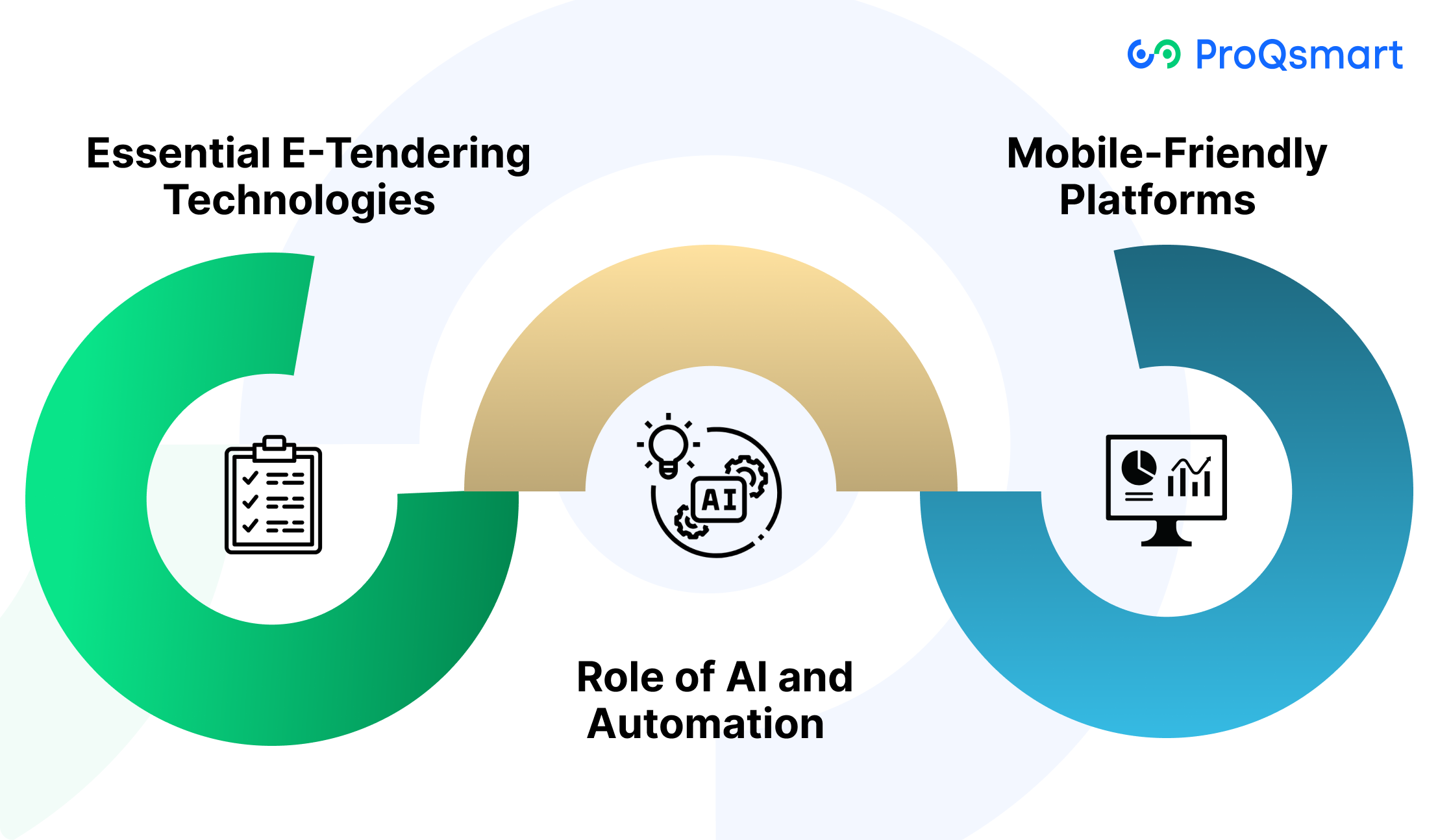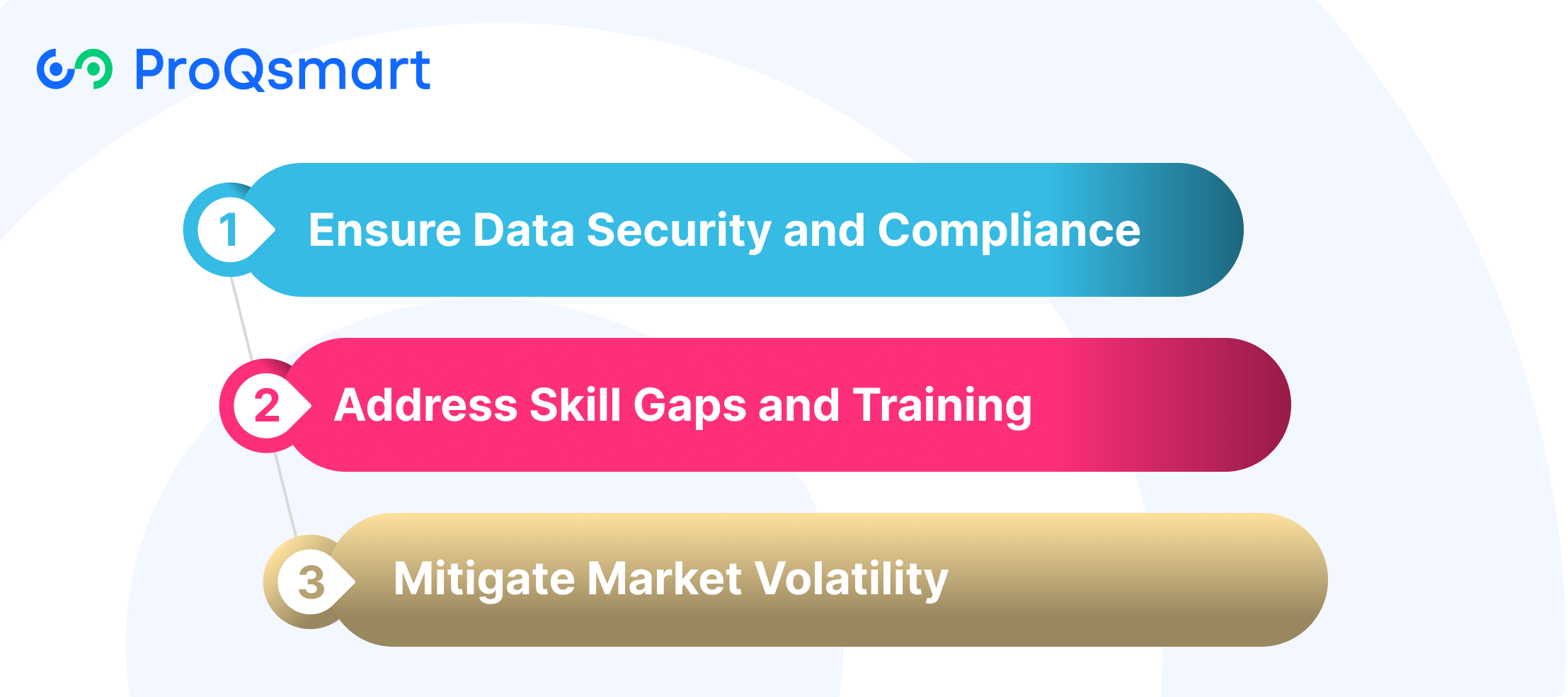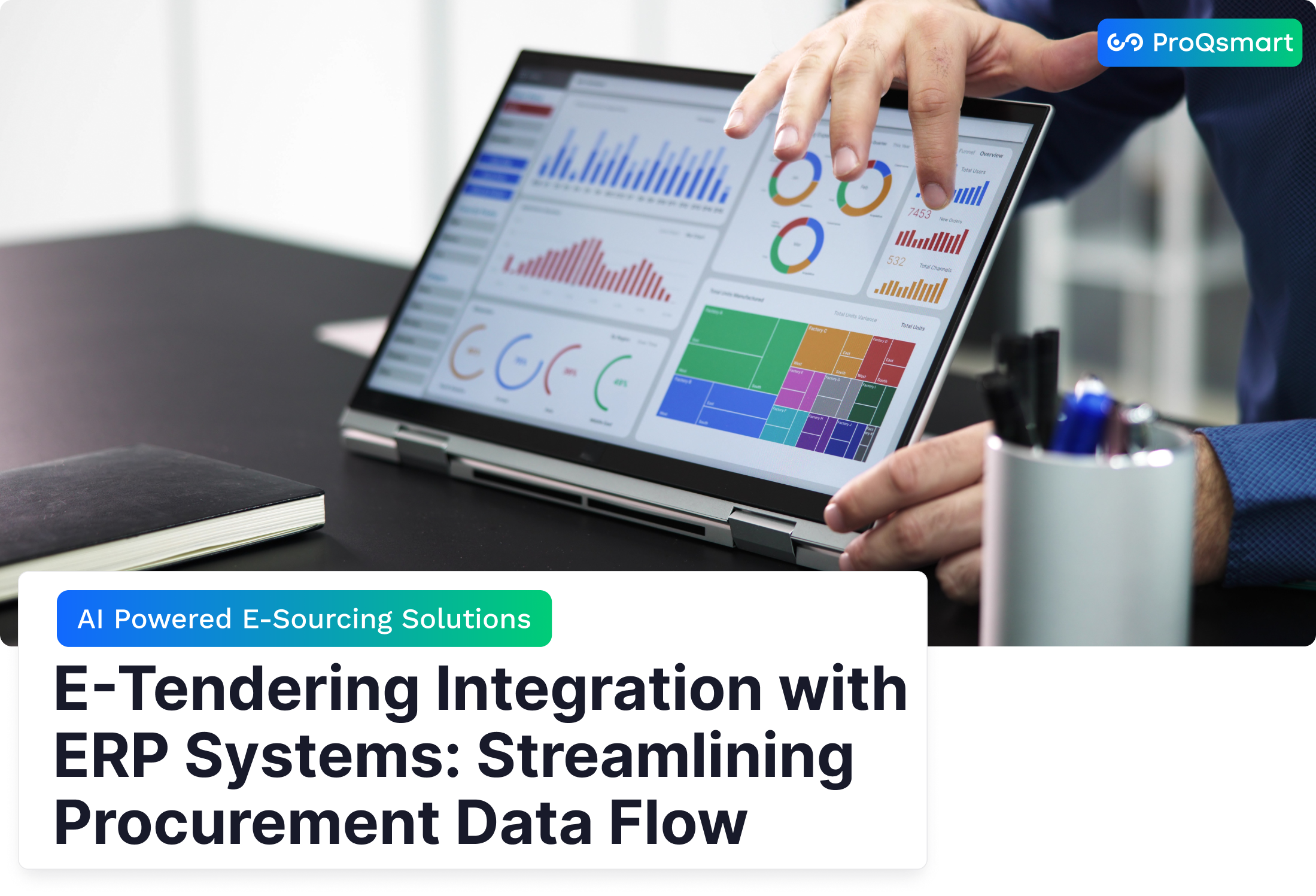E-tendering is an online process that streamlines and automates the entire tendering cycle, improving procurement efficiency and transparency. With digital platforms, organizations have the ability to monitor all bid invitations, supplier submissions, and evaluations under one centralized system. This method decreases administrative burden, shortens time to process, and demonstrates a good faith effort to follow procurement policies.
For businesses, e-tendering tools often integrate with existing procurement software, allowing seamless tracking and reporting of supplier performance and contract management. This improves small business and diverse supplier outreach to help increase access to a broader vendor pool.
E-tendering continues to advance with new features such as real-time data analytics. These innovations deliver real-world solutions that make business operations more efficient, enhance transparency and accountability, and produce cost savings.
How E-Tendering Process Works

E-tendering modernizes procurement by digitizing and automating the tendering process. By streamlining workflows, minimizing administrative costs, and guaranteeing transparency, e-tendering is quickly becoming an absolute necessity for organizations looking to get ahead in competitive procurement environment.
Here’s a detailed look at the e-tendering process outlining each stage’s importance and steps that can be taken to improve outcomes.
1. Identify Tender Requirements
Carefully defining your tender requirements will set you up for success when utilizing e-tendering. Key criteria include:
-
Scope of work and deliverables
-
Budget constraints and timelines
-
Regulatory and compliance standards
Moreover, specific requirements yield more qualified bidders, which helps ensure that proposals meet the project’s overarching goals. Clear, thorough documentation reduces opportunities for misunderstanding, creating less friction and easier collaboration with suppliers.
2. Publish Tender Notices Online
Lean and inclusive tender notices must include accurate, accessible information, including submission deadline, evaluation criteria and contract duration. Greater exposure and reach through online platforms can correspondingly help you to broaden your pool of potential, qualified suppliers.
ProQsmart, for instance, uses AI not only to simplify posting, but to be clear in messaging, while optimizing reach and therefore response rates.
3. Bid Submission and Management
E-tendering systems reduce submission time by 50%, enabling on-the-spot online bidding. Intuitive, user-friendly interfaces make bid management easy, and digital centralized storage allows for seamless tracking and retrieval, creating transparency.
ProQsmart’s automated workflows help you stay compliant every step of the way.
4. Evaluating Submitted Bids
The basis for evaluating bids must be cost, delivery date and compliance with requirements. Tech—including AI-powered tools—helps them do this deeper evaluation more efficiently and objectively.
ProQsmart’s transparent tracking of the process leaves no room to miss a single submitted bid.
5. Contract Awarding Process
Following final evaluations, contracts are awarded through clearly documented steps, providing for transparency with successful bidders.
ProQsmart improves the post-award process by easily tracking and managing subcontractors included in contracts, as well as closely monitoring supplier performance.
Technologies Powering E-Tendering

By adopting cutting-edge technologies e-tendering has become one of the biggest drivers of procurement transformation, allowing organizations to automate workflows, connect with stakeholders, and boost transparency.
With these technologies working together, e-tendering changes how companies approach tendering in a way that saves both time and money.
1. Essential E-Tendering Technologies
Key technologies driving e-tendering include:
-
Ensures data accessibility and secure storage across locations.
-
Enhances decision-making with predictive analytics and real-time tracking.
-
Streamline repetitive tasks, so projects move through workflows quicker and with increased accuracy.
-
Offer flexibility, encouraging active participation from bidders.
Software solutions are key to streamlining the complicated processes involved in e-tendering. For instance, ProQsmart’s document management technologycan manage and house every required bid submission to help expedite processing times by as much as 50%.
Integration capabilities are just as impressive to consider, allowing for easy integration with any existing enterprise systems. This flexibility increases operational efficiency, all while ensuring uniformity across workflows in production and operations.
2. Role of AI and Automation
By taking care of labor-intensive, repetitive steps while making more accurate, data-driven decisions, AI and automation are radically transforming e-tendering.
ProQsmart’s AI-powered tools reduce the potential for manual errors and deliver real-time insights, allowing users to make faster, more-informed, data-driven decisions.
Predictive analytics are another game-changing technology that supercharge e-tendering capabilities, equipping businesses with predictive intelligence on bid evaluations, supplier performance and more.
Automation prevents fraud, maintains compliance, and increases the speed to project delivery by months and millions in project costs.
3. Mobile-Friendly Platforms
So, what does all this mean for procurement? Modern procurement is mobile by necessity.
Mobile-friendly platforms boost bidder engagement and participation by allowing users to access e-tendering systems from anywhere at any time.
ProQsmart leverages the power of mobile technology to create better connectivity, document sharing, and integration for a truly collaborative real-time experience.
These tools increase the usability of e-tendering systems, empowering a diverse pool of talent that can also save time and improve efficiency.
E-Tendering and ERP Integration
By integrating e-tendering platforms with ERP systems, governments can leverage a digital procurement process to create a seamless procurement ecosystem. This integration goes beyond connecting two separate systems; it fosters a frictionless movement of data and workflows, enhances production efficiencies in procurement, and amplifies the strategic value of the procurement cycle.
1. Streamline Operations with ERP
Smoother, more efficient operations With ERP integration, a common work center for all procurement activities enables improved operational efficiency. When e-tendering platforms, such as ProQsmart, integrate with ERP systems, organizations like yours enjoy a seamless transition of data.
This centralization allows procurement data to be easily referenced in one hub. It also integrates supplier bids and contract terms, eliminating redundant and manual data entry. To illustrate, ProQsmart’s automation workflows make document requisition and evaluation more efficient to save time when tender reviews are documented.
Integrated workflows increase team cooperation. With dashboards displaying the status at any given time, procurement professionals can also take corrective action in real-time to maintain compliance and support their organization’s goals. Besides, by expediting procurement activities and enabling greater efficiency, this streamlined process becomes critical when controlling intricate procurement cycles.
2. Data Synchronization Advantages
Seamless real-time data synchronization between e-tendering and ERP systems is crucial. It also ensures accurate, up-to-date information across platforms, enhancing decision-making. With ProQsmart’s real-time tracking, data discrepancies are a thing of the past, providing procurement teams with a single source of truth on spend and supplier performance.
Analytics that are fully synchronized allows the organization to price based on informed decisions rather than guesswork, fostering efficient cost savings. ProQsmart’s embedded analytics easily allow companies to find 20% – 30% in maverick spending. This alignment helps connect procurement activities to broader strategic goals.
3. Improve Decision-Making
With integrated data, you can make better informed, outcome-focused decisions. ProQsmart’s machine learning capabilities enhance analytics, supporting strategic planning with granular insights. Timely access to accurate data enables procurement professionals to adapt to market shifts, ensuring an efficient procurement process and effective supplier management.
Key Considerations for Implementation

Adopting an e-tendering system requires strategic consideration. This strategy needs to address operational, technological, and compliance hurdles while facilitating a seamless procurement experience for all stakeholders. Here, we decide the most important factors organizations should focus on to make the digital procurement process work to their full advantage.
1. Ensure Data Security and Compliance
Data security is fundamental to the electronic tendering process. Given the range of sensitive procurement data, from supplier bids to financial details, protecting this info must be a top priority. Utilizing a digital procurement platform with robust encryption, secure access controls, and regular audits ensures this sensitive information remains safe.
2. Address Skill Gaps and Training
Skill gaps are another usual barrier to e-tendering success. If staff are uncertain around new digital platforms, they will be more likely to get lost in the system, delaying widespread adoption. Robust training curricula specifically designed for the transportation procurement workforce can help close that gap.
Regular training on system changes and industry best practices helps keep staff skilled over the long haul. For example, offering hands-on workshops or online modules can empower teams to manage the platform effectively and adjust to evolving functionalities.
3. Mitigate Market Volatility
Recent market volatility has affected the pricing, availability of suppliers, and general procurement strategies. Adaptive e-tendering processes that are enabled with real-time data analytics allow organizations to effectively react to these shifts.
By incorporating flexibility into tender evaluation criteria, we can build resilience by design. Dynamic pricing models and multi-supplier frameworks give procurement teams the flexibility to move fast in volatile markets. They achieve this without losing quality or schedule.
Measure E-Tendering Success
E-tendering is transforming the procurement process by increasing efficiency, transparency, and cost-effectiveness. Measuring its success should start with clear metrics and ongoing analysis to ensure the e-tender platform is providing quantifiable value back to your organization.
Track Key Performance Indicators
Key performance indicators (KPIs) can serve as a comprehensive framework to measure the success of e-tendering systems. Essential KPIs include:
-
Estimation of reductions in time to submit, where in several instances there was a measured reduction of as much as 50%.
-
Savings on administrative expenses like printing and postage, which can save project sponsors tens of thousands of dollars per project.
-
Improved transparency, ensuring visibility into bid submissions and timelines.
-
Higher quality bids, aided by analytics platforms such as ProQsmart that score and predict bid success.
-
Better alignment with spending plans and faster implementation of best-in-class sourcing approaches.
By monitoring these KPIs on a regular basis, procurement teams can identify where they need to improve and make informed, data-driven changes to their approaches.
Calculate Return on Investment
To bridge the gap and truly understand the ROI of e-tendering, governments must be able to quantify the financial and operational benefits. Cost savings including less administrative burden and more efficient alignment of budgets are concrete measures of success.
Improved workflows and expedited tender cycles drive operational efficiencies. Sharing ROI results with decision makers, supported by more granular performance data, can further illustrate the benefits of pursuing e-tendering projects.
Refine E-Tendering Strategies
Performance data and feedback from stakeholders, whether they’re your employees or vendors, are key to improving e-tendering processes. ProQsmart encourages teamwork and streamlines workflows.
Plus, it evolves with the market, so your procurement strategies remain nimble and impactful. Focusing on continuous improvement attracts greater efficiencies while deepening relationships with suppliers and increasing supplier compliance.
Conclusion
E-tendering simplifies procurement by accelerating supplier selection, reducing paperwork, and enhancing visibility into critical decision-making. Leveraging technologies like AI and ERP systems ensures efficiency and transparency throughout the process. By setting performance targets and adjusting strategies based on insights, organizations can gauge success beyond cost savings, focusing on process efficiency and supplier performance.
E-tendering is not just a tool; it represents a new era of intelligent sourcing that leads to better outcomes. To reduce procurement friction and adopt innovative practices, e-tendering offers a proven path forward. By embracing this technology, you can streamline your procurement processes and achieve your mission more effectively.
To transform your procurement strategy and leverage the full potential of e-tendering, explore ProQsmart and book a demo today. Discover how ProQsmart’s e-tendering solutions can help you automate workflows, enhance transparency, and drive business success.




